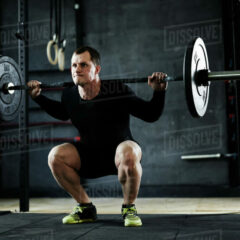Arm workouts aren’t just about aesthetics. They are crucial in building overall power and improving performance across different activities, from lifting weights to daily tasks. Strong arms support the body in achieving well-rounded strength, essential for any fitness routine to enhance power.
Focusing on specific arm muscles such as the biceps, triceps, and forearm muscles can significantly boost your power routine. When these muscles are strong, they help lift larger weights and stabilize more demanding movements, aiding in better performance during combined exercises.

The physiological benefits of incorporating arm workouts are vast. Strong arms contribute to increased muscle endurance and strength, and they also support better joint stability and bone health. This holistic improvement enriches overall fitness, making challenging routines more sustainable and effective.
Building arm strength isn’t just about lifting heavier weights—it’s about smart integration. Understanding how arm workouts fit into larger power routines is key. You address primary and supporting muscles by strategically incorporating arm workouts, paving the way for a balanced and powerful workout routine.
Designing Your Personalized Arm Workout Plan
Developing a tailored workout plan that suits your requirements is vital for reaching your fitness objectives. Customizing your regimen greatly improves your chances of success and ensures your efforts yield the desired results. Don’t underestimate the power of a personalized approach in transforming your results! It starts with knowing what you aim for—building muscle, increasing endurance, or just toning up.

There are many ways to work out your arms, from using free weights to machines or even relying on bodyweight exercises like push-ups and planks. Each method has its benefits. Free weights provide a greater range of motion and activate stabilizing muscles. Machines can provide more controlled movements, which is excellent for beginners. the
Tailor your arm workouts by aligning them with your personal fitness goals. For muscle gain, heavier weights with fewer reps might be your go-to. Lighter weight with more reps could be effective if you aim for endurance. Mix up exercises to target different parts of the arm to ensure comprehensive strength development.
Balancing your workout intensity with enough recovery time is crucial. Overworking muscles can lead to injuries and burnout, so rest days are just as important as workout days. Adjust the intensity and frequency based on how your body feels and responds. A well-managed plan will help in achieving a sustainable and rewarding fitness journey.
Effective Integration Techniques for Maximizing Results
Synchronizing arm workouts with other parts of your routine isn’t just about adding more exercises. It’s about creating a seamless flow where each workout complements the other. By strategically integrating arm routines, you ensure every muscle group gets the attention it needs without overworking any area.
One effective method to enhance results is incorporating supersets and circuit training. These techniques keep your heart rate up while working different muscle groups, reducing workout time and increasing calorie burn. A superset involves pairing a bicep curl with a tricep extension. It not only saves time but also maximizes muscle engagement.
Consistency is key, but so is variety. Progressive overload—gradually increasing the weight or intensity—keeps muscles adapting and growing. It’s more than lifting heavier; it’s about challenging your muscles in new ways over time.
Selecting the right workout frequency prevents plateaus. While aiming to hit arm workouts about two to three times a week is generally a solid plan, listen to your body. Adjust based on recovery, strength gains, and energy levels. This attentive approach ensures your power routine stays effective and prevents burnout.
Tracking, Measuring, and Adjusting Your Progress
Keeping tabs on your progress is just as important as the workout itself. It helps you stay focused and see how far you’ve come. Whether you use a fitness app, a diary, or simple visuals like progress pictures, having some form of measurement keeps you accountable.
Recognizing improvements, like increased endurance or manageable weights, builds motivation. But setbacks happen, and that’s part of the process. If you notice you’re not progressing, it might be time to reevaluate your routine.
Adjustments can be as simple as changing the number of reps, altering rest periods, or trying new exercises to work muscles from different angles. Keeping a variety of movements in your routine prevents monotony and encourages muscle growth.
Consulting fitness professionals can offer valuable insights. They ensure you’re using proper form and might suggest tweaks you hadn’t considered. Their experience can guide you through plateau periods and help maintain steady progress in your arm workouts.
